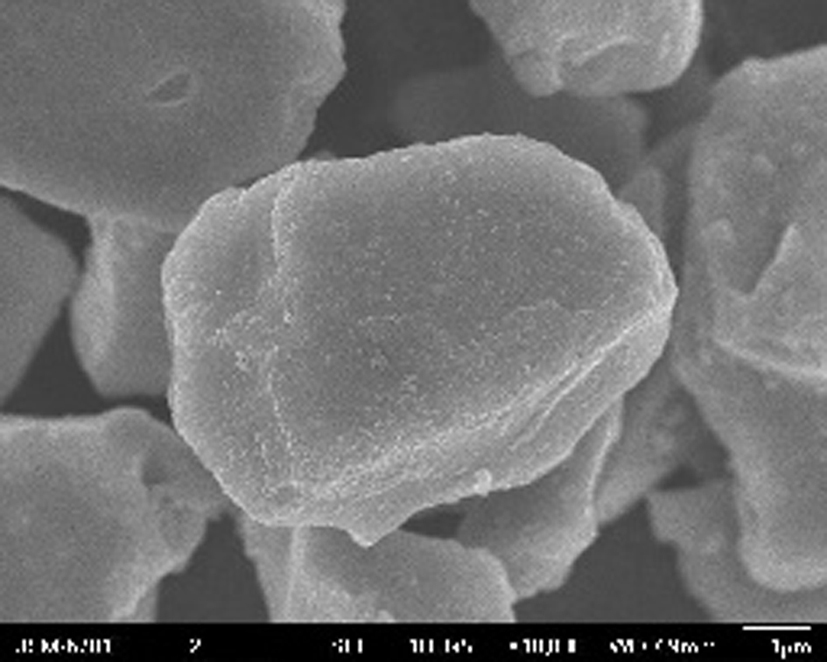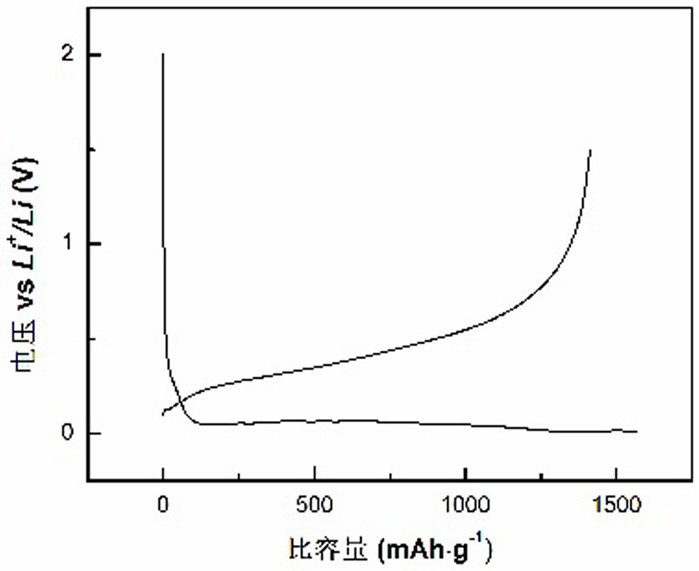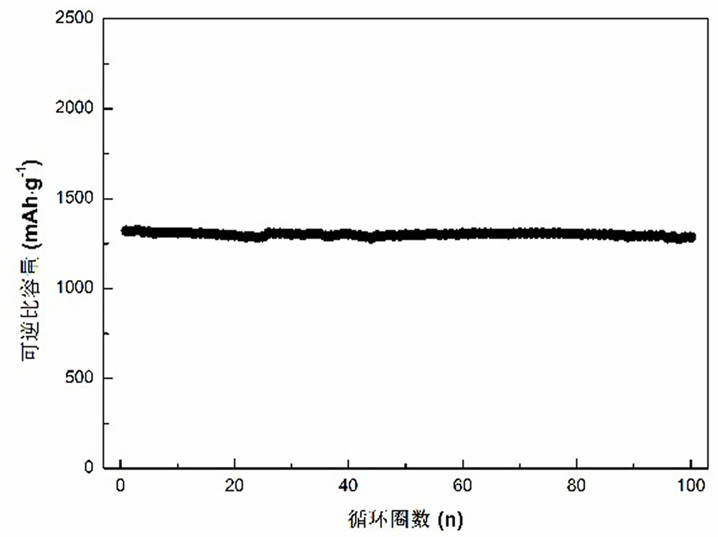Silicon-based composite material containing lithium phosphate coating layer constructed by in-situ conversion and preparation method of silicon-based composite material
A silicon-based composite material, silicon-based material technology, applied in chemical instruments and methods, silicon oxide, phosphorus compounds, etc., can solve the problems of affecting the capacity of active substances, reducing the activity of newly exposed interfaces, and not significantly improving water resistance, etc. Achieve the effect of inhibiting gas production, improving dual stability and improving cycle stability
- Summary
- Abstract
- Description
- Claims
- Application Information
AI Technical Summary
Problems solved by technology
Method used
Image
Examples
Embodiment 1
[0038] (1) Preparation of carbon-coated pre-lithiated silicon-based materials
[0039] Add 500 g of silicon oxide particles with a median particle size of about 6 μm into a CVD vapor deposition furnace for carbon coating treatment, pass acetylene gas at a flow rate of 600 sccm, deposit at 750 °C for 3 h, and wrap the The coated material was placed under the condition of nitrogen protection, and the temperature was raised to 900 °C at a heating rate of 5 °C / min for 1 h to obtain a carbon-coated silicon-based material. The carbon-coated silicon-based material obtained above and 49.8 g of lithium hydride powder were added to a high-speed mixer, and mixed for 30 min at a stirring rate of 1000 r / min under the protection of an inert atmosphere to obtain uniformly mixed raw materials, and the raw materials were placed in Under the protection of argon, the temperature was raised to 600 °C for 1 h at a heating rate of 5 °C / min, and a carbon-coated pre-lithiated silicon-based material w...
Embodiment 2
[0046] Other conditions are the same as in Example 1, except that 1 g of ammonium dihydrogen phosphate is used instead of phosphoric acid.
Embodiment 3
[0048] Other conditions are the same as in Example 1, except that phosphoric acid is replaced by a mixture of 1 g of ammonium dihydrogen phosphate and lithium dihydrogen phosphate, wherein the mass ratio of ammonium dihydrogen phosphate to lithium dihydrogen phosphate is 1:1.
PUM
| Property | Measurement | Unit |
|---|---|---|
| particle diameter | aaaaa | aaaaa |
Abstract
Description
Claims
Application Information
 Login to View More
Login to View More - R&D
- Intellectual Property
- Life Sciences
- Materials
- Tech Scout
- Unparalleled Data Quality
- Higher Quality Content
- 60% Fewer Hallucinations
Browse by: Latest US Patents, China's latest patents, Technical Efficacy Thesaurus, Application Domain, Technology Topic, Popular Technical Reports.
© 2025 PatSnap. All rights reserved.Legal|Privacy policy|Modern Slavery Act Transparency Statement|Sitemap|About US| Contact US: help@patsnap.com



